1905 Indian Head Penny Values, Errors, and Rarities
The Indian Head penny was minted from 1859 to 1909. The 1905 Indian Head penny had the 5th largest mintage of the series at 80,717,011. This makes the 1905 a very common coin.
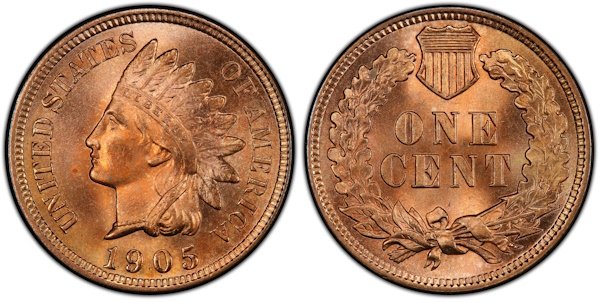
1905 Indian Head Penny graded MS-67 RD by PCGS
1905 Indian Head Penny Prices
MINT STATE GRADES
BROWN
RED-BROWN
RED
1905 Indian Head Cent Value
The most valuable 1905 Indian Head cents are uncirculated coins earning the highest “Mint State” ratings from certified coin grading services. Mint State (aka uncirculated) coins are graded from MS-60 to MS-70.
DID YOU KNOW?
Coins are graded on a 70-point scale, where 1 is so worn as to be almost unidentifiable, and 70 is perfect, with no damage or blemishes visible even under magnification.
Proof 1905 Indian Head Cent Prices
Proof coins are made from specially prepared dies and deeply struck one at a time. These coins are meant to be sold to collectors, not circulate. There were only 2,152 proof Indian Head cents made in 1905.
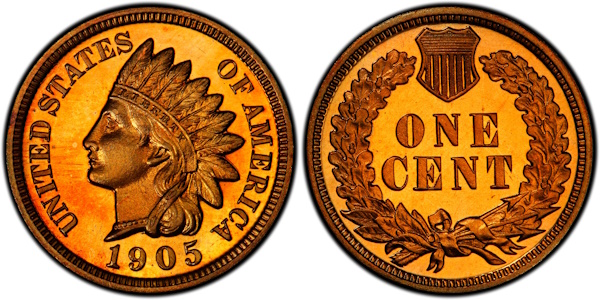
1905 Proof Indian Head Penny graded PR-67 RD by PCGS
1905 Indian Head Proof Penny Prices
UNCIRCULATED GRADES
BROWN
RED-BROWN
RED
RD, RB, BN: What Do They Mean?
United States pennies (one-cent coins) are not only graded by condition but also by how much of their original color remains. There are three classifications: Brown (BN), Red-Brown (RB), and Red (RD).
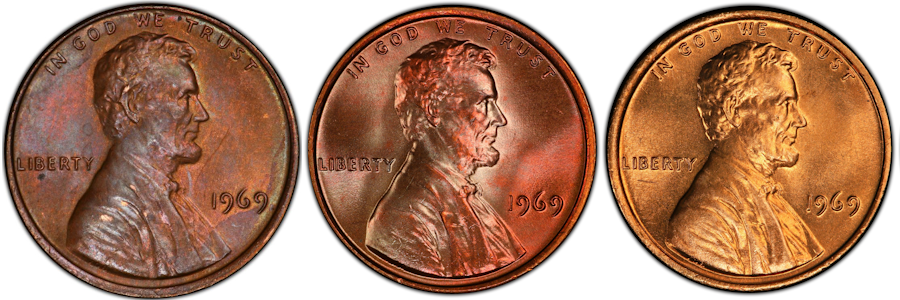
1969 Lincoln Cents graded BN, RB, and RD (PCGS)
These definitions are more subjective than the physical grades laid out in the 1–70 coin grading scale.
Circulated cents and uncirculated ones exposed to air develop a brown, sometimes chocolatey color. All things being equal, cents graded BN are far less desirable to collectors than RB or RD coins.
Red-brown cents have a good portion of their original luster remaining. The exact amount of red remaining for a coin to be considered RB can differ among grading services. Some collectors find that certain RB cents can have more eye appeal than a “better” RD coin of the same condition grade.
Red coins have almost all their original luster present. For older cents, this is usually only possible for new coins kept in rolls or airtight containers.
As expected from a penny minted more than 100 years ago, most surviving coins are Brown. Red-Brown examples in Mint State are somewhat less common. Mint State 1905 Indian Head cents in Red condition are far scarcer than Red-Browns once you hit MS-63 and above.
Enough 1905 Indian Head pennies survive in most grades, that you can cherry-pick them to find fully-struck examples with smooth surfaces with little difficulty.
Top Five Indian Head Cent Mintages
Rarest 1905 Indian Head Pennies: Finest Known and Auction Records
This is a list of the finest-known examples of each 1905 Indian Head penny mintage. The auction records listed may or may not reflect the highest price ever paid, since person-to-person private sales are not recorded.
1905 BN INDIAN HEAD PENNY VALUE
AUCTION RECORD: $960 for MS-65 BN (2022: Stack’s Bowers)
FINEST KNOWN: MS-66 BN (PCGS); MS-66 BN (NGC)
1905 RB INDIAN HEAD PENNY VALUE
AUCTION RECORD: $1,726 for MS66* RB (2011: Heritage)
FINEST KNOWN: MS-66 RB (PCGS); MS-66+ RB (NGC)
1905 RD INDIAN HEAD PENNY VALUE
AUCTION RECORD: $19,975 for MS-67 RD (2013: Heritage)
FINEST KNOWN: MS-67 RD (PCGS); MS-67+ RD (NGC)
1905 PROOF INDIAN HEAD PENNY VALUE
AUCTION RECORD: $11,750 for PR-67 RD (2014: Stack’s Bowers)
FINEST KNOWN: PR-67 RD (PCGS); PF-67 RD (NGC)
1905 Indian Head Penny Varieties and Errors
Variety coins are coins that have had something happen to the die before the coin is struck. Common coin varieties include Doubled Die on Reverse (DDR), Doubled Die on Obverse (DDO), and Repunched Mint Mark (RPM.)
The difference between variety coins and error coins is that variety coins result from a mistake on the coin die. Many hundreds or even thousands of coins with the same variety defect can be minted before the mistake is noticed.
There are many minor 1905 Indian Head cent varieties. Most (like the repunched date variety) are difficult to see with the naked eye. One popular variety is the 1905 penny DDR #21, as recorded by David Poliquin in his “Definitive Reference For Indian Head Cent Varieties.”
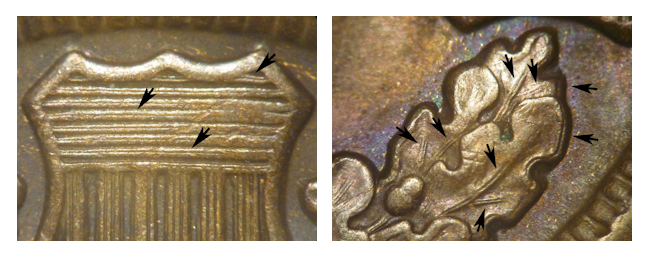
Details of 1905 Indian Head Cent DDR #21 (David Poliquin)
Error coins result from a mechanical malfunction of the coin press or a defect or mistake in the coin blank itself. (Anything that happens to them after they are ejected from the coining press is referred to as “post-mint damage.”)
Common error coins are:
Most, if not all, common coin errors can be found in 1905 Indian Head pennies and do not command very high prices compared to problem-free examples. One big exception to that is the 1905 Indian Head Cent struck on a $2.5 Quarter Eagle gold planchet.
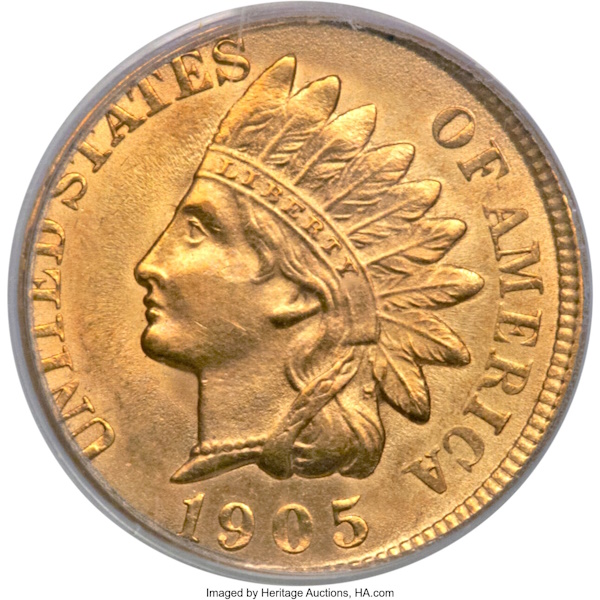
1905 Indian Head penny struck in gold.
There are only five of these coins known to exist. This particular example shown above is graded MS-64 by PCGS and sold for $105,750 on April 23, 2015.
Not a coin you’re going to find in your spare change!
Read more about collecting American pennies from the numismatic experts at Gainesville Coins:
What Are The Different Penny Errors and How Much Are They Worth?
1912-S Penny Values, Errors, and Rarities
2009 Lincoln Penny Bicentennial Cents: Value, Errors, and Designs
1969 Lincoln Penny Values, Errors, and Rarities
1968 Lincoln Penny Values, Errors, and Rarities
1964 Lincoln Penny Values, Errors, and Rarities

Steven Cochran
A published writer, Steven's coverage of precious metals goes beyond the daily news to explain how ancillary factors affect the market.
Steven specializes in market analysis with an emphasis on stocks, corporate bonds, and government debt.
